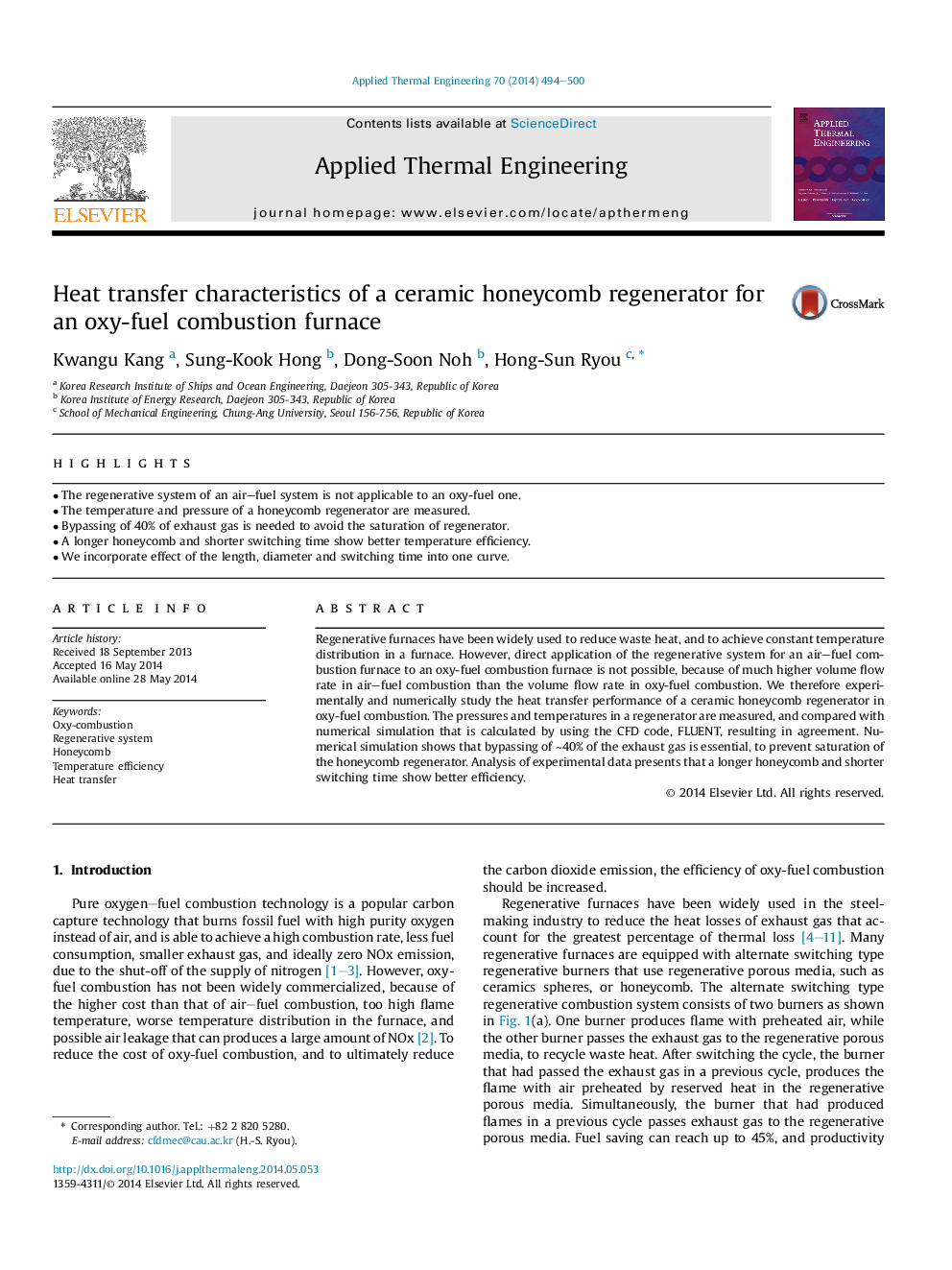| Article ID | Journal | Published Year | Pages | File Type |
|---|---|---|---|---|
| 646292 | Applied Thermal Engineering | 2014 | 7 Pages |
•The regenerative system of an air–fuel system is not applicable to an oxy-fuel one.•The temperature and pressure of a honeycomb regenerator are measured.•Bypassing of 40% of exhaust gas is needed to avoid the saturation of regenerator.•A longer honeycomb and shorter switching time show better temperature efficiency.•We incorporate effect of the length, diameter and switching time into one curve.
Regenerative furnaces have been widely used to reduce waste heat, and to achieve constant temperature distribution in a furnace. However, direct application of the regenerative system for an air–fuel combustion furnace to an oxy-fuel combustion furnace is not possible, because of much higher volume flow rate in air–fuel combustion than the volume flow rate in oxy-fuel combustion. We therefore experimentally and numerically study the heat transfer performance of a ceramic honeycomb regenerator in oxy-fuel combustion. The pressures and temperatures in a regenerator are measured, and compared with numerical simulation that is calculated by using the CFD code, FLUENT, resulting in agreement. Numerical simulation shows that bypassing of ∼40% of the exhaust gas is essential, to prevent saturation of the honeycomb regenerator. Analysis of experimental data presents that a longer honeycomb and shorter switching time show better efficiency.
